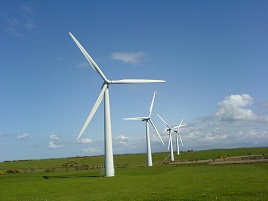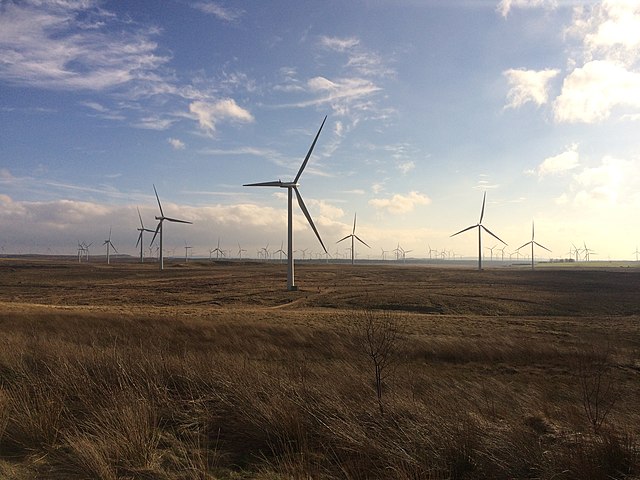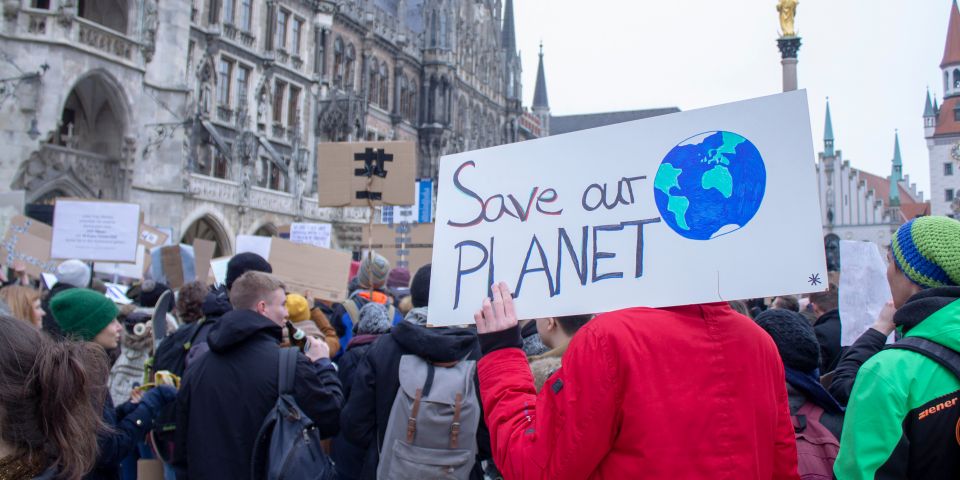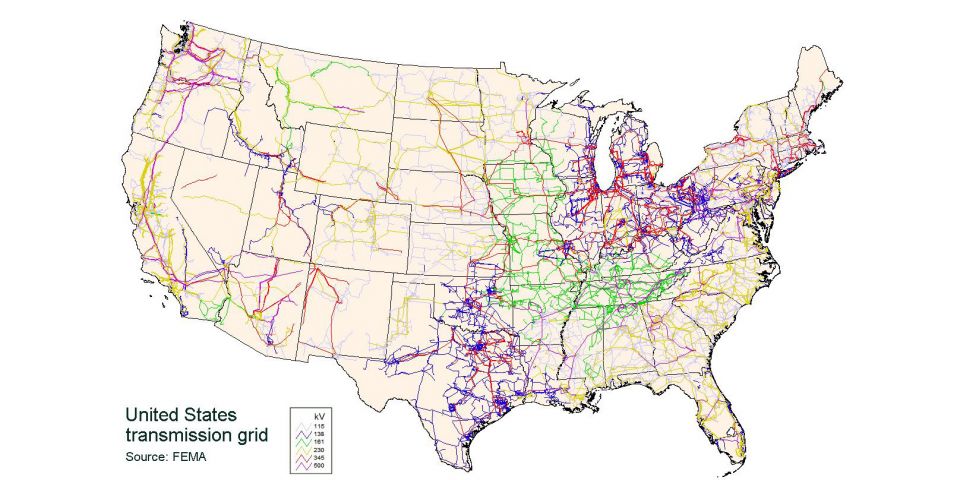Europe: A Textbook Case of How NOT to Go About Emissions Reductions
 Rod Adams posted a good article on this site about the situation in Europe with respect to CO2 emissions reductions and the electricity market in general. Here, I'll share my own, additional perspectives.
Rod Adams posted a good article on this site about the situation in Europe with respect to CO2 emissions reductions and the electricity market in general. Here, I'll share my own, additional perspectives.
European market situation
The European Union (EU) did establish a cap-and-trade program to reduce CO2 emissions. However, they also promulgated many policies that specifically support increased generation from renewable sources. In addition to an EU-wide goal of a specified fraction generated from renewables, many member states have other policies that dramatically intervene in the market to promote, or outright require, large amounts of renewable generation. These include large government subsidies for renewables construction and/or generation, feed-in tariffs that guarantee renewable generation far above market prices for any kilowatt hours (kWh) they sell, and outright government mandates for given amounts of renewables use.
The cost of constructing the renewable generation is either borne by government subsidies (i.e., by people's taxes), or by residential or small business customers through higher electric rates. Large industries are often not asked to contribute much, in an effort to prevent them from moving offshore. This places even more of the burden (cost) on residents and small business. The high capital costs of renewables are not, however, reflected in the market price for power, i.e., the price that traditional utility power plants can fetch in the market. They are paid separately. Only the low variable (operating) costs of the renewable generation are reflected in their market price, which competes with other forms of generation. Even their operating costs (and their market price) may be highly subsidized, so they can often operate at a profit even with a zero or negative market price.
As a result of the above, when the sun is shining or the wind is blowing, renewables dump large amounts of power onto the grid, driving the market price of electricity way down. This greatly reduces profit margins at all non-renewable generating stations. It does not harm renewables profitability nearly as much, since they get most of their revenue from generation subsidies, or enjoy a very high, pre-established, above-market rate for any kWh they sell. In addition to causing grid stability issues, this has greatly harmed the financial condition of European utility companies that (as Rod pointed out) have started to protest those lavish renewables support policies.
Renewables policies defeat cap-and-trade
I remember when the Waxman-Markey cap-and-trade bill was making its way through the US Congress. It had a CO2 reduction goal of 17 percent by 2020, but it also featured a national renewable portfolio standard which required that 20 percent of overall power come from non-hydro renewables (which made up a tiny fraction of overall generation at the time). I remember thinking to myself that once utilities met the renewables requirements, they would also, as a result, roughly meet the CO2 reduction requirements as well. That is, the entire market for CO2 emissions reducing technology would have been forcibly handed, by government fiat, to renewables only. There would be few if any reductions left for all other methods, including nuclear, coal to gas switching, or even conservation, to compete for. Such policies would make a mockery of what was supposed to be one of the central concepts of cap-and-trade, i.e., that all CO2 reduction technologies and methods would receive equal support and incentive, and would compete freely on an open and objective playing field. The notion was that this would achieve emissions reductions at minimum cost.
My suspicions above are playing out in Europe. They have a cap-and-trade system alongside a system that greatly subsidizes and/or requires a significant amount of renewable generation. Unsurprisingly, the CO2 market has collapsed, with the price of a CO2 emissions credit falling to an almost negligible level of ~5 euros/ton. Rod's article correctly points out that some of this is due to the weak economy (which reduces emissions) and various exemptions that have been given out. However, I believe that the main reason for the low emissions credit price is that Europe's policies are requiring enough renewables to meet the emissions reductions goals by themselves. This leaves almost no emissions reduction market for any other technologies or approaches, and that manifests itself as a very low emissions credit price.
Some may try to argue that they are supporting other methods of emissions reduction as well since they also have a cap-and-trade program. But, upon examination, if one has a significant renewables subsidy/mandate program in addition to a cap-and-trade program, one effectively has no cap-and-trade program (unless the required CO2 emissions cuts greatly exceed those that would result from the renewables policies). This has been the case in Europe. The effective government policy has been to have no fair and objective competition between emissions reduction methods, and to decide that renewables are the only method that will be used, regardless of practicality or cost effectiveness. Cap-and-trade exists in name only. The results of this unfortunate policy are being made clear in Europe, where minimal CO2 emissions reductions have been achieved at tremendous cost. The United States has achieved far greater emissions reductions at a much lower cost, without any significant policy at all, mainly through switching from coal to gas in the electric sector.
No distinction between non-renewable sources
One of the most troublesome aspects of European "global warming" policies is a mindset in which CO2 (and other pollution) reduction is strongly associated with increased renewable generation, and not at all with any other methods. All non-renewable sources are lumped together as old, "dirty" sources. This mindset reflects itself in their energy policies, which make little if any distinction between non-renewable sources. Despite the fact that these policies are ostensibly about global warming and CO2 emissions reduction, they provide little to no support for any other means of CO2 emissions or even pollution reduction, especially given the negligible price for CO2 emissions credits. The choice between non-renewable sources, for the remaining majority of overall generation, is made on the basis of cost alone, with no consideration given to environmental performance.
As a result of these policies, a bizarre situation is occurring in Europe (especially Germany) where the remaining non-renewable generation is switching from gas to coal; the reason being that coal is slightly cheaper. Never mind the public health impacts, the significant increase in CO2 emissions, or the fact that giving a slight incentive to stick with gas would be a vastly less expensive means of achieving emissions reductions than building renewable capacity.
The ultimate result of their policies (and mindset) is the electric sector in countries like Germany and Denmark, where a fraction of the power is generated by renewables, with most of the rest generated by coal, even including lignite (an especially dirty type of coal). Their power sectors manage to achieve a combination of very high overall costs with high emissions of CO2 and other air pollutants. Countries with a generation profile dominated by hydro, nuclear, and/or gas have much lower emissions of pollution and CO2, and much cheaper electricity. Nations like Germany and Denmark, and current European energy policy-makers, seem unable to understand that the figure of merit should be how little coal you use, not how much renewables you use.
There have been some calls, by left/green parties in Europe, to set a floor on the CO2 emissions price, or to find some other way to encourage gas vs. coal. I'd say such policies are long overdue, and are the minimum that they can do, without making an absolute mockery of their stated goal of CO2 emissions reductions.
How intermittency should be accounted for
In a normal power market, renewable energy generators would have to pay for the (capital) cost of construction, as well as operating costs, by selling the resulting generation on an open market. The problem they would face is that exactly when they produce their intermittent bursts of power (i.e., when they have power to sell), they would flood the market and the market price would drop significantly. Thus, intermittent sources, especially ones like wind that produce the most at times of minimum demand, would almost always get a significantly reduced price for the power they generate. Under the natural market system (without government intervention) the negative aspects of intermittency would naturally be accounted for by the market. The intermittency of those sources would harm their own profitability.
However, in Europe, and in parts of the United States, it seems that they've managed to devise market policies that result in renewables' intermittency instead harming the profitability of the existing, non-renewable, non-intermittent generators. The reason is that they do not have to sell their power, and recoup their capital costs, in an open market. They are guaranteed much higher prices for their power, through large subsidies, renewable energy credits or feed-in tariffs. In some cases, the price they fetch may not even be dependent at all on what happens to the (spot) market price for power, which is driven down by their intermittent bursts of generation. Thus, while they do not suffer much from the reduction in market prices (that they cause), the remaining generators do suffer a loss of profitability, at least at times when there is surplus renewable power.
One of the most frustrating aspects of this is that many renewables advocates are trying to establish the narrative that the non-renewable sources' loss of profitability is a sign that they (as opposed to renewables) lack economic merit and are failing in the market. They go on to argue that coal and nuclear plants are obsolete because they are "inflexible" and cannot respond to market "needs" for rapidly varying power output. Their underlying assumption is that the need to rapidly vary power output is just a fact of life (in the future). They choose not to mention that (mandated) renewable penetration is the primary reason why such capabilities are needed in the first place. The old system of baseload plants with gas peaking units worked just fine. Instead of acknowledging that intermittency is a problem (or negative trait), they're trying to change the narrative to say that lack of rapid load following capability is a problem.
One final insult
Perhaps the most infuriating of all European policies is the EU's policies on "state aid" for given energy sources. Apparently, the EU has rules against member states subsidizing any given energy source over another. The argument is that it isn't fair to place any source at a disadvantage in the open market; probably as part of a continental "free trade" policy. An example may include a country subsidizing coal because it has significant domestic coal deposits and a large mining industry.
This may seem strange given the massive interventions in the market on behalf of renewables. Why is it fair to lavishly subsidize (or even mandate!) renewables at the expense of other sources? Wouldn't such policies favor nations with better wind or solar resources over others? Of course, as you've probably guessed, renewables are simply exempt from the policy.
Some EU nations, most notably Great Britain, have decided that they are interested in building new nuclear plants and have indicated willingness to provide them some degree of economic support (i.e., some subsidy). Well, it appears that some nations (e.g., Germany), as well as anti-nuclear groups, are objecting to allowing any member state to offer nuclear any subsidy at all, based on the EU "state aid" policy.
The EU is seriously entertaining this objection. In fact, they've just formally stated that they will not officially adopt a policy that allows member states to support nuclear. Instead, they said that they may evaluate individual state's policies on a case-by-case basis. That is, whereas the entire EU has renewable generation goals, and encourages member states to subsidize renewable sources, they may not even allow a member state to provide any support to nuclear, even if that state wants (and votes) to do so! This is just one more example of how the EU is hostile to any means of pollution and CO2 emissions reductions other than increased use of renewables.
What's really needed
Of course, all of these pernicious market effects could be avoided, and emissions of air pollution and CO2 could be reduced at a far lower cost, if policies simply placed a price on the emissions of CO2 and various unhealthy pollutants. If foreign energy dependence is a (strategic or economic) concern, place tariffs on energy imports. After doing that, all significant subsidies or mandates for politically favored energy sources should be removed. (Loan guarantees for capital-intensive sources may be considered, given the short-term mindset that pervades the private sector.)
At that point, the market would decide what type of generation to build. The result will be maximum emissions reduction at minimum cost. All energy sources should have to recover their capital and operating costs by selling their power under fairly normal market conditions. Under a merchant system, they would have to make their money selling their generated power in the open market. Under a traditional rate base system, they should have to convince regulators that their proposed generation profile produces power at the minimum overall (system) cost.
Needless to say, European energy policies are a far cry from the above, especially in nations like Germany and Denmark. The results have been clear: expensive power with very limited reductions in CO2 emissions.
_______________________

Hopf
Jim Hopf is a senior nuclear engineer with more than 20 years of experience in shielding and criticality analysis and design for spent fuel dry storage and transportation systems. He has been involved in nuclear advocacy for 10+ years, and is a member of the ANS Public Information Committee. He is a regular contributor to the ANS Nuclear Cafe.







